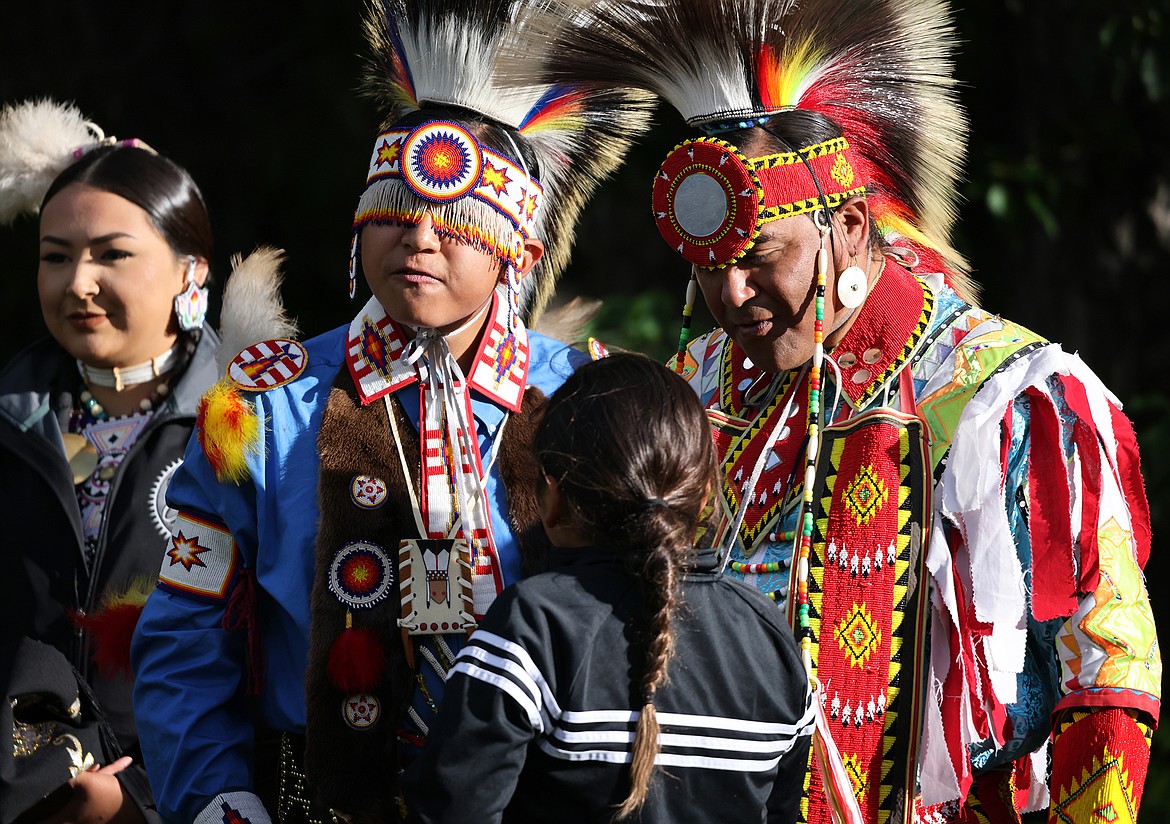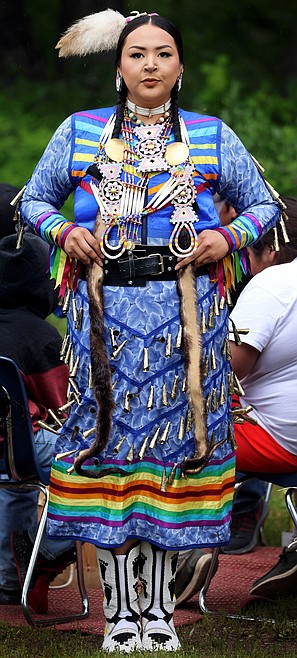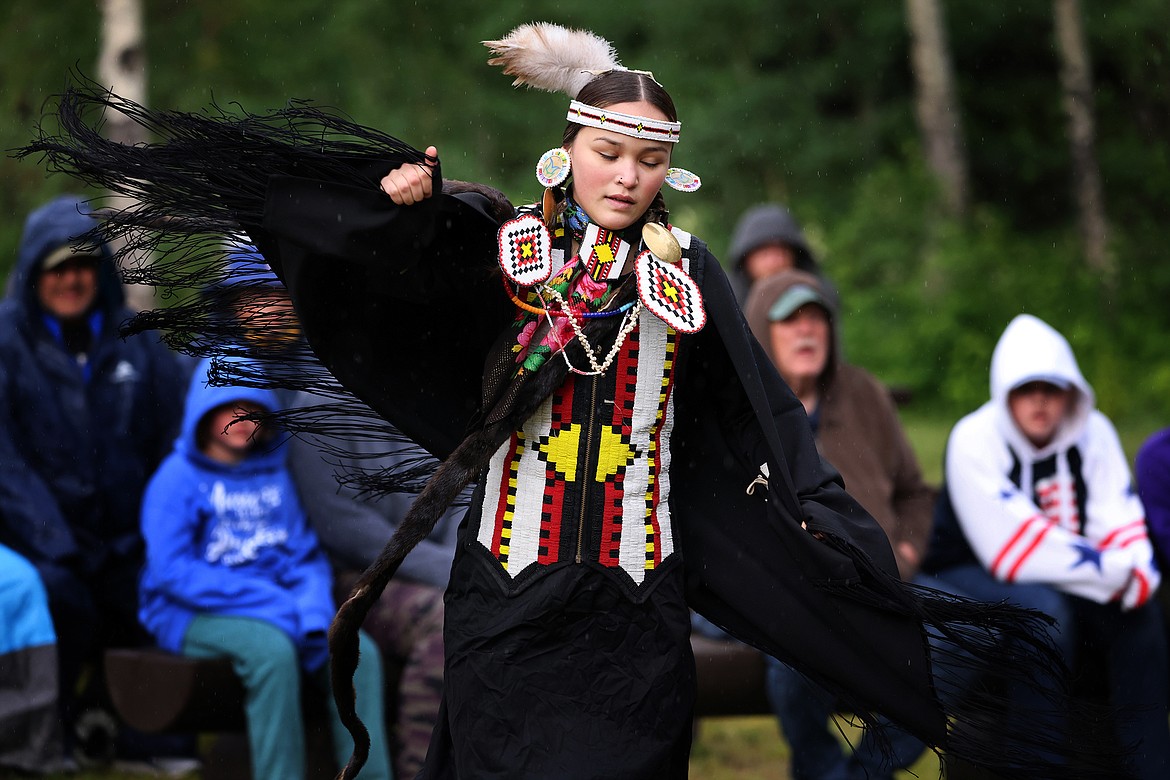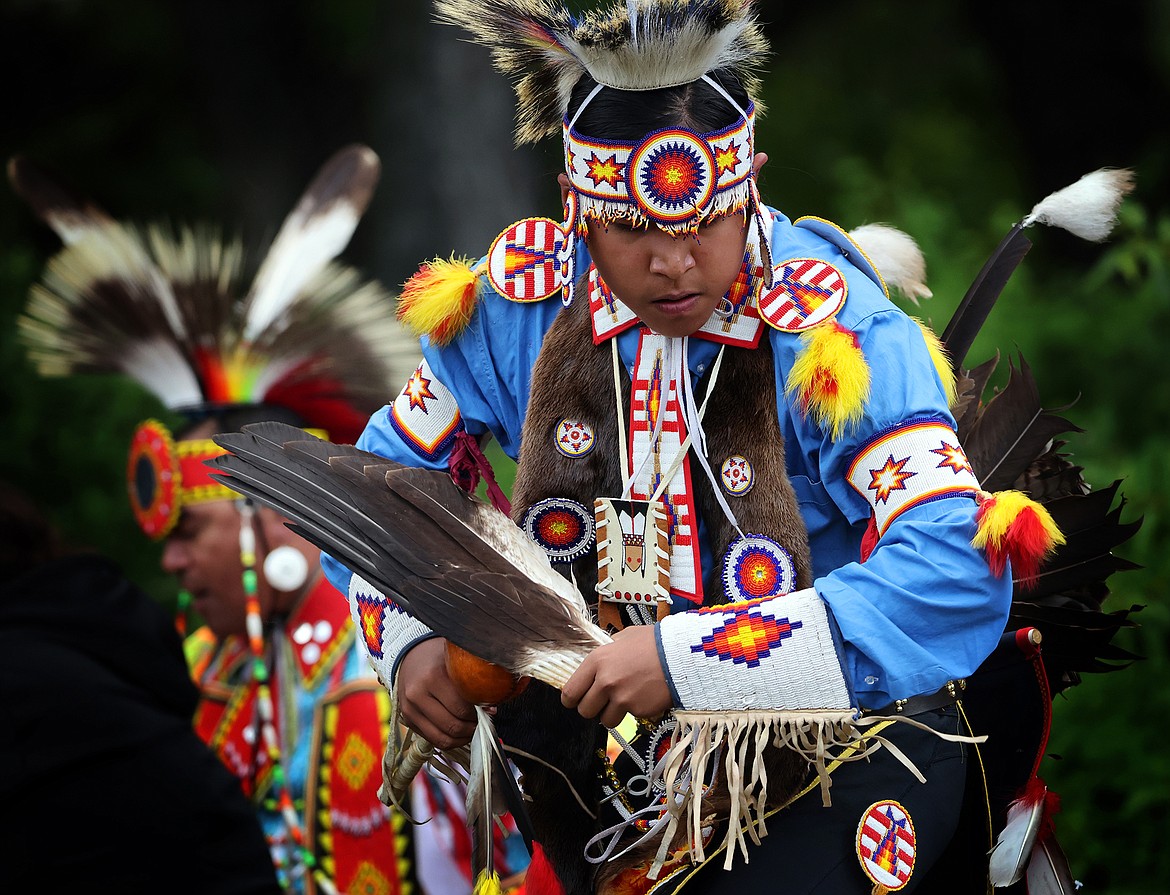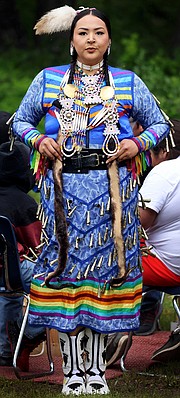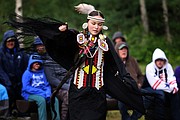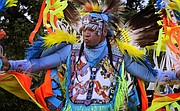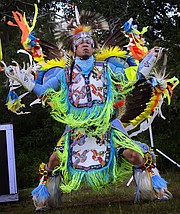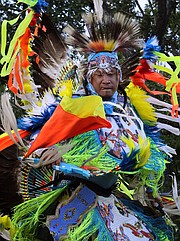Glacier's Native America Speaks program marks 40th year
Dozens of spectators filled the wooden benches in the shadow of Red Eagle Mountain at the Rising Sun picnic area in Glacier National Park on Wednesday evening. The 40 mile per hour wind gusts, driving rain and nearby thunder were largely ignored while the group took in the talents of the Blackfeet Singers and Dancers, there to share their culture as part of the park’s Native America Speaks program.
Founded by Harold Gray and his 16-year old son Joey in 1982, Native America Speaks is the longest-running program of its kind in the national park system and is celebrating its 40th anniversary this summer with an expanded slate of presentations.
“We are really excited to be able to celebrate this anniversary, especially knowing just how much the program has grown over the years,” Hudson Bay District Interpreter Debby Smith said. “The program started out pretty small scale with only a handful of presenters, and has now really grown into something that is much bigger. Native America Speaks has expanded out into the community and locations outside of the park. We have so many visitors that I don’t think have a full understanding of what is going on with the tribes today. We talk a lot about the history of the tribes, but it is not all about what has happened in the past. It is about what is happening today and as we move into the future. It’s about how we can all continue to learn and grow together and improve relationships. That is very important and I find it to be very inspiring.”
Native America Speaks’ Blackfeet, Salish, Kootenai and Pend d'Oreille presenters will have more than 100 opportunities to share their rich history and culture through singing, storytelling, presentations, and hands-on learning this summer as programs are offered every day, and sometimes twice a day, through Sept. 11.
THE NATIVE America Speaks program can trace its roots back to those early days with Harold and Joey Gray in 1982, when the pair would put on presentations for Glacier’s visitors. The original name of the program, if it had one, has been long forgotten and indeed the whole program may have become a distant memory without the fortunate addition of Jack Gladstone as a presenter in 1985.
The acclaimed Blackfeet singer, songwriter and poet was then planning his future career as he worked as a public speaking instructor at the Blackfeet Community College in 1985 when he decided to answer a newspaper ad looking for presenters for the program’s fourth season.
The Hudson Bay District Interpreter at the time, Bruce Fladmark, who had recently become the new director of the program selected Gladstone and three others as presenters as the program officially took the moniker of Native America Speaks.
Things did not go particularly well that summer, Gladstone remembered.
“We had several presenters, who had stiff-armed their way into getting paid in advance, who simply did not show up for their programs that summer,” Gladstone lamented. “I would often loiter with my guitar in the bushes and trees when the others were scheduled to speak and if they did not show up, I would help out by doing the program. There have been a lot of programs started and stopped in other parks, and that very well could have been us after those first three years if we hadn’t pulled things together.”
Determined to keep the program alive, Gladstone convinced Fladmark to give him control of the roster, which he soon filled with “reliable and respected” presenters Darrel Kipp, Darrel Norman and his cousin, Curly Bear Wagner.
While Gladstone left the community college in 1986 to seek fame and fortune (which he claims to still be searching for), he continued his role with Native America Speaks and is proud to still participate today and help groom the next generation of presenters, which includes his daughter Mariah Gladstone.
At 28 years old, Mariah Gladstone has been involved with the Native America Speaks program her entire life, from carrying equipment and helping sell CDs to helping interpret the programs using Native American sign language and eventually becoming a presenter herself in the summer of 2012.
“I was very fortunate to be able to join the program as an interpreter and to get the opportunity to participate in story telling and share a history of this area that goes much further back than the park’s existence,” she said. “In an interesting way, the program is an evolution of the oral tradition and storytelling culture that we come from. It is our tradition to share our stories and have that history and mythology as a set of values and this program gives us another opportunity to do that.”
With her stories, many of which focus on the trickster Napi or traditional hero stories, Mariah tells about the landscape and connects it to historical or mythological stories that are very connected to place and the plants and animals that surround us.
“I hope that visitors and audience members at the Native America Speaks programs get to learn more about the park as the landscape has been seen by the people who have called it home for more than 14 thousand years. That can help provide a much greater context to the park’s visitors but can also help instill a great sense of responsibility to the land that has been so important to our people for so long.”
NOW FUNDED by the National Park Conservancy, the Native America Speaks program has continued to expand over the years. What started as a father and son looking to share their culture has evolved into a program featuring numerous presenters each summer as well as the Blackfeet Singers and Dancers.
As Native America Speaks celebrates its 40th anniversary, a new logo designed by Salish and Kootenai College student Henrietta Fay Wolf Black has been unveiled to commemorate the milestone with the park and presenters looking forward to many more years of the program.
“I think this program is so successful because of the collaboration that has been maintained between the interpreters and the park. It is something that is super exciting to be a part of and it is something that the park gets to brag about and so do the tribes in the area,” Mariah Gladstone said.
“I think continuity and consistency has been key to this program’s success. I give Jack a lot of credit on that front as well as our new generation of leaders who are now telling new stories as well as the old stories from a different perspective. When I talk to donors from around the country, they understand the significance of being able to provide this opportunity,” Glacier National Park Conservancy Executive Director Doug Mitchell added. “I think this program provides a remarkable opportunity for park visitors to hear, first hand, about the history of this landscape that we currently know as Glacier National Park from the people that have called it home for more than 10 thousand years. It provides a critical cultural lens, without which a full understanding of this area’s landscape is incomplete.”
A full schedule of presentations can be found online at https://www.nps.gov/glac/planyourvisit/nas.htm.



